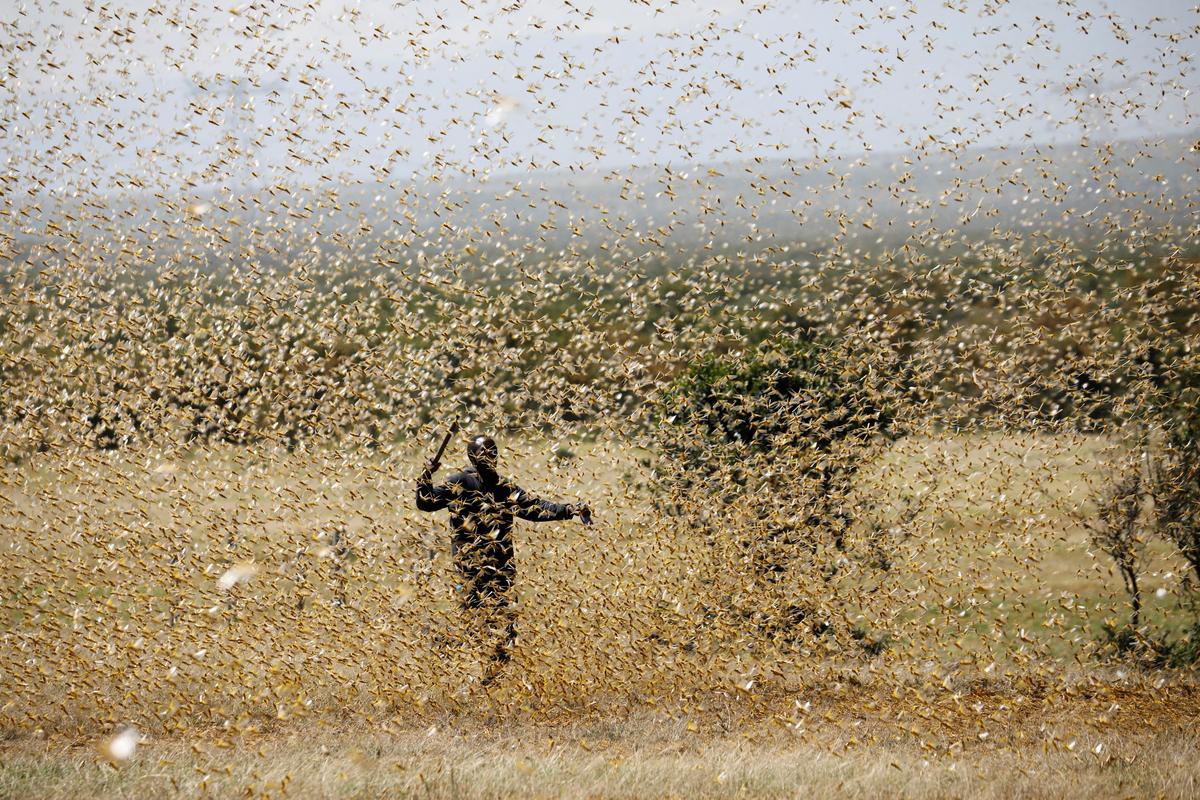Locusts are a species of grasshoppers that travel in groups. They have short horns. A group of this insect consists of grasshoppers in millions. They travel in such a way that they clouds even the sunlight.
Locusts are infamous for flying/travelling from one field to another. They eat crops — from their leaves to branches and roots — in a short span.
The species’ scientific name is Schistocerca Gregaria. The hind legs of these insects are strong and bulky.
It lays eggs – around 60,000 to 80,000 in number — under the sand. It does this three times in its lifetime.
The life-cycle of this insect takes up to 10 months, with eggs hatching in three months. They turn adults in another three months, and complete lifecycle in five months.
A locust is said to be 20 times bigger than the one that was seen 70 years ago in the Middle East, Africa, and the Gulf.
A specialty of locust is that it can fly for a long time. It can travel the distance of 5,000 km in 10 days.
According to the Food and Agriculture Organization, locusts can eat up to two grams a day.
Interestingly, a 130-km long locust swarm is about 50 to 80 million grasshoppers. This can finish the supplies of 25,000 people in a day.
Where did the locusts come from?
African nations including Somalia, Kenya, Uganda, Tanzania, Ethiopia, and South Sudan, among others had earlier reported that a swarm of insects finished their crops away.
Later, the insects were reported to have travelling eastward to Iran, Pakistan, and India.
Why are locusts a problem?
The locust, recently, destroyed some 500,000 hectares of crops including mustard, wheat, maize, and spices in the Indian states of Punjab, Rajasthan, Gujarat, Haryana, and Uttar Pradesh.
According to the Food and Agriculture Organization, locusts are even deadlier than fall armyworms which had created havoc in the USA in 2018.
How is the world reacting to it?
Several countries are using biological methods under the integrated pest management (IPM) technique to combat the effect of locust.
Is Nepal in danger?
One can assume that Nepal’s districts near the Indian states–mainly Uttarakhanda and Uttar Pradesh–are at a higher risk. Hence, there is a higher risk of the locusts entering Nepal from the western and south-western sides.
The cause of the increasing size of locusts is the changing climate. Their population in the world has increased by 8,000 times.









Comment